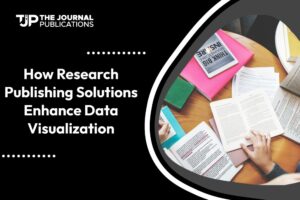Outline
- Intro
- The Evolution of Open-Access Models
- Key Benefits of Open-Access Models
- Challenges Facing Open Access Models
- The Future of Open Access
- Ending
Intro
The academic publishing domain is changing. This has resulted in the rise of open access (OA) models, such as diamond and platinum OA. These frameworks are breaking down barriers to knowledge sharing. They provide readers with free access to work and ensure authors bear no costs. Here’s how these models are redefining research paper publication Services.
The Evolution of Open-Access Models
Academic publishing has relied on subscription-based models. These restrict access to those who can afford expensive academic journal publication service fees. Open Access publishing aims to democratize knowledge. It has models like Gold OA. They need authors to pay Article Processing Charges which termed is (APCs) to publish their work. However, the latest OA models, like Diamond and Platinum, are particularly disrupting this norm. They cut fees for both authors and readers. Institutions, non-profits, or government grants fund these models. They promote equity and transparency in publishing.
Diamond OA has become a popular funding model for community-driven publishing. For instance, journals funded by universities or research groups remove financial hurdles. It helps researchers from developing regions publish and access content.

Key Benefits of Open-Access Models
- Wider Accessibility: OA models make research available globally. This boosts their reach and impact. This is critical during global crises, like the COVID-19 pandemic. Rapid access to research can save lives.
- Cost Transparency: Unlike traditional or Gold OA, Diamond OA has no hidden costs. This ensures a fair Research paper publication service, and authors, especially early-career researchers, are not burdened.
- Enhancing Equity in Research: These models promote inclusion by giving low-resource researchers access. They address disparities in global knowledge production and dissemination.
- Boosting Research Visibility: OA articles have higher citation rates. This shows that they are more visible and influential.
- Promoting Interdisciplinary Collaboration: OA platforms share knowledge across fields. They foster new solutions to global issues, such as climate change and public health.
Challenges Facing Open Access Models
Despite their benefits, OA models are not without challenges.
- Funding Sustainability: Diamond and Platinum OA models depend on external funding. It’s often inconsistent and does not cover long-term publishing costs.
- Quality Assurance: It needs strong support. It must ensure high standards in peer review and editing. It must be free from commercial incentives.
- Perceived Prestige: OA journals, especially newer ones, lack prestige and impact.
- The OA movement has supported low-quality, predatory journals without intending to do so. These journals exploit authors by promising fast research paper publication services without real peer review.
The Future of Open Access
Open Access models likely see faster adoption. Global initiatives and policy changes are driving this. Funding agencies now need publicly funded research to be available to everyone. Also, AI-assisted peer review and digital platforms are improving OA publishing. They are making it more efficient and inclusive.
Groups like Coalition S and UNESCO support OA initiatives. They want all research to be accessible to everyone. Collaborative funding and altmetrics improve OA publishing’s sustainability and transparency.
Final Thoughts
Open Access models, especially Diamond and Platinum OA, are changing research publishing. By removing financial barriers, they are democratizing access to knowledge. They are fostering collaboration and addressing inequities in academia. The rise in support for OA frameworks is a good sign for scholarly communication. It’s a sign despite some challenges.
Those interested in OA publishing must understand these models. They are key to navigating the changing world of academic research.






